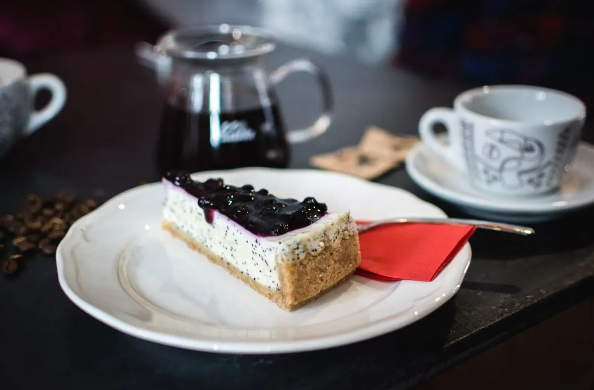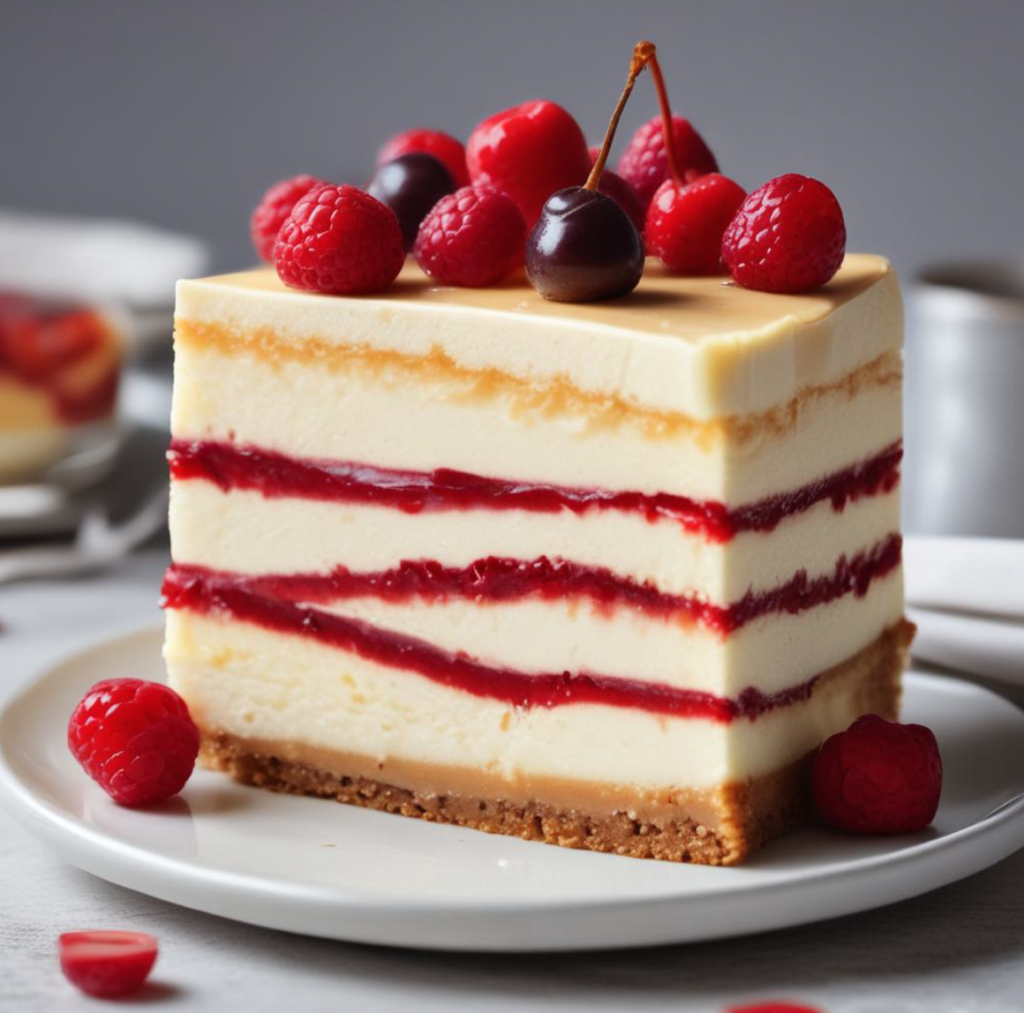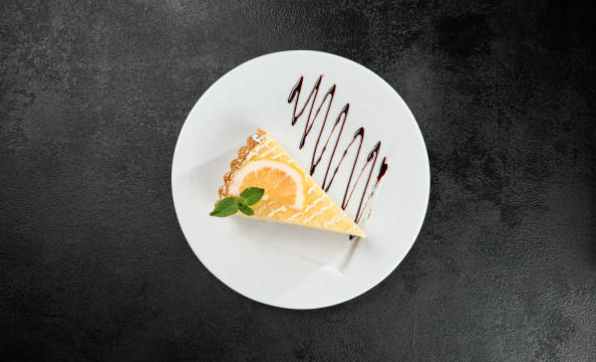Table of Contents:
- The Basic Ingredients of Cheesecake Filling
- Optional Ingredients for Cheesecake Filling
- How to Make a Classic Cheesecake Filling
- No-Bake Cheesecake Filling Ingredients
- Best Practices for a Perfect Cheesecake Filling
- Cheesecake Filling Variations
- Recent Recipes
- Frequently Asked Questions (FAQs)
- Conclusion
What is Cheesecake Filling Made Of?
Cheesecake is a beloved dessert known for its rich, creamy texture and sweet flavor. The key component that gives cheesecake its signature taste and consistency is the cheesecake filling. Whether you are making a classic New York-style cheesecake or experimenting with a no-bake version, understanding what goes into the cheesecake filling is essential.
In this guide, we’ll break down the ingredients that make up cheesecake filling and explore how each one contributes to the final result. We’ll also touch on variations for different types of cheesecake fillings and provide helpful tips for achieving the perfect consistency.
The Basic Ingredients of Cheesecake Filling

At its core, cheesecake filling consists of a few simple ingredients that come together to create a smooth, velvety texture. Let’s take a closer look at the most common ingredients:
1. Cream Cheese
- Role: The main ingredient in most cheesecake recipes.
- Why It’s Important: Cream cheese provides the rich, creamy texture and slightly tangy flavor that cheesecake is famous for.
- How to Use It: Always use softened cream cheese to ensure it blends smoothly without lumps. Full-fat cream cheese is recommended for the best texture and flavor.
2. Sugar
- Role: Sweetens the filling and balances the tanginess of the cream cheese.
- Why It’s Important: Granulated sugar is the most commonly used sweetener in cheesecake filling, providing the perfect level of sweetness.
- How to Use It: Gradually add sugar to the cream cheese, ensuring it dissolves completely for a smooth texture.
3. Eggs
- Role: Binds the ingredients together and adds richness.
- Why It’s Important: Eggs are essential in baked cheesecakes as they help the filling set and create a custard-like consistency.
- How to Use It: Add eggs one at a time, mixing gently to avoid incorporating too much air, which can cause cracks in the cheesecake during baking.
4. Vanilla Extract
- Role: Adds flavor and enhances the sweetness.
- Why It’s Important: Vanilla extract complements the tanginess of the cream cheese and the sweetness of the sugar, giving the filling a more complex flavor.
- How to Use It: A teaspoon or two of vanilla extract is enough to elevate the flavor of your cheesecake filling.
5. Heavy Cream or Sour Cream
- Role: Adds creaminess and a silky texture.
- Why It’s Important: Depending on the recipe, heavy cream or sour cream can be added to enhance the texture of the cheesecake filling. Sour cream gives a slightly tangy flavor, while heavy cream adds richness.
- How to Use It: Fold in the cream or sour cream gently to avoid overmixing.
For more variations and tips on creating the perfect filling, check out our dessert-making tips and guides for inspiration.
Optional Ingredients for Cheesecake Filling
While the basic ingredients listed above are common in most cheesecake recipes, there are several optional ingredients you can add to customize your cheesecake filling.

1. Lemon Juice or Zest
- Why Use It: Adds a fresh, citrusy note that balances the richness of the cream cheese.
- How to Use It: Add 1-2 tablespoons of lemon juice or a teaspoon of zest for a bright, tangy flavor.
2. Fruit Purees or Preserves
- Why Use It: Fruit purees or jams can be swirled into the filling to create a fruity flavor or layered within the cheesecake for added sweetness.
- How to Use It: Swirl a few tablespoons of fruit puree into the batter before baking or layer preserves between layers of filling.
3. Chocolate
- Why Use It: Chocolate adds a decadent twist to traditional cheesecake.
- How to Use It: Melt chocolate and fold it into the cream cheese mixture for a chocolate cheesecake variation.
4. Flavor Extracts
- Why Use It: Almond, coffee, or coconut extracts can be used in place of or in addition to vanilla extract to give your cheesecake a unique flavor profile.
- How to Use It: Add 1 teaspoon of your preferred extract to the mixture.
How to Make a Classic Cheesecake Filling
Here’s a step-by-step guide to making a classic cheesecake filling using the basic ingredients mentioned earlier:

Ingredients:
- 24 oz cream cheese, softened
- 1 cup granulated sugar
- 3 large eggs
- 1 teaspoon vanilla extract
- 1/2 cup sour cream or heavy cream
Instructions:
- Prepare the Cream Cheese: In a large bowl, beat the softened cream cheese using an electric mixer until smooth and free of lumps.
- Add Sugar: Gradually add the sugar, beating until the mixture is smooth and creamy.
- Incorporate the Eggs: Add the eggs one at a time, mixing on low speed to avoid overmixing. Ensure each egg is fully incorporated before adding the next.
- Add Vanilla and Cream: Stir in the vanilla extract and sour cream (or heavy cream), mixing until fully combined. The filling should be smooth and velvety.
- Pour and Bake: Pour the mixture into a prepared crust and bake according to your recipe’s instructions.
For more detailed baking tips and techniques, explore our collection of baking guides.
No-Bake Cheesecake Filling Ingredients
A no-bake cheesecake filling differs slightly from the baked version, as it relies on chilling rather than baking to set the filling. Here are the main ingredients you’ll need for a no-bake cheesecake filling:
- Cream Cheese: As with baked cheesecake, cream cheese is the star ingredient.
- Powdered Sugar: Used in place of granulated sugar to create a smoother, silkier texture.
- Vanilla Extract: Adds flavor to the filling.
- Whipped Cream: Provides the light, airy texture that sets the filling without baking.
How to Make No-Bake Cheesecake Filling
- Beat the Cream Cheese: Soften cream cheese and beat it until smooth.
- Add Powdered Sugar: Gradually add powdered sugar and vanilla extract.
- Fold in Whipped Cream: Gently fold in freshly whipped cream to lighten the mixture.
- Chill: Pour the mixture into a prepared crust and chill for at least 4 hours or overnight.
This method is perfect for those looking for a quicker, hassle-free cheesecake that doesn’t require an oven.
Best Practices for a Perfect Cheesecake Filling

To achieve the perfect cheesecake filling, follow these best practices:
- Use Full-Fat Cream Cheese: Low-fat versions can lead to a less rich texture.
- Soften Ingredients: Ensure that cream cheese and eggs are at room temperature before mixing to avoid lumps.
- Avoid Overmixing: Too much air in the batter can cause cracks during baking.
- Chill After Baking: Allow the cheesecake to cool completely before chilling to ensure the filling sets properly.
- Use a Water Bath: Baking your cheesecake in a water bath can prevent cracking and ensure even cooking.
By following these tips, you’ll achieve a smooth, creamy cheesecake filling every time. For more tips on perfecting your desserts, check out our baking hacks.
Cheesecake Filling Variations
Cheesecake fillings can be customized in endless ways. Here are some popular variations:
1. New York-Style Cheesecake
- What Makes It Special: Uses heavy cream or sour cream for a denser, richer filling.
- Best for: Traditional baked cheesecakes with a smooth, velvety texture.
2. Chocolate Cheesecake Filling
- What Makes It Special: Includes melted chocolate in the batter.
- Best for: Decadent desserts that combine the richness of chocolate with the creaminess of cheesecake.
3. Berry Swirl Cheesecake
- What Makes It Special: Swirls of berry puree or jam are added to the filling.
- Best for: A fruity twist on classic cheesecake.
4. Lemon Cheesecake
- What Makes It Special: Uses lemon zest and juice for a bright, tangy flavor.
- Best for: Those who prefer a tart contrast to the richness of the filling.
Recent Recipes
Frequently Asked Questions (FAQs)
1. Can I use low-fat cream cheese in cheesecake filling?
Yes, but keep in mind that low-fat cream cheese will result in a less rich and creamy texture. Full-fat cream cheese is recommended for the best results.
2. How long should I beat the cream cheese filling?
You should beat the cream cheese until smooth, but avoid overmixing once the eggs are added to prevent air bubbles, which can cause cracking.
3. Why is my cheesecake lumpy?
Lumpy filling is usually a result of not softening the cream cheese before mixing. Always use room temperature ingredients for the smoothest texture.
4. Can I freeze cheesecake filling?
Yes, you can freeze cheesecake, but it may alter the texture slightly. It’s best to freeze after the cheesecake is fully assembled and set.
5. How can I make my cheesecake filling firmer?
To make your filling firmer, ensure you’re using full-fat cream cheese and avoid adding too much liquid. You can also chill the cheesecake longer to help it set.
Conclusion
Cheesecake is a delightful blend of cream cheese, sugar, eggs, and other ingredients that create a creamy, rich dessert. Whether you’re making a traditional baked cheesecake or a no-bake version, understanding the key ingredients and how they work together will help you perfect your cheesecake every time. By experimenting with variations and flavors, you can tailor the filling to suit any occasion.

